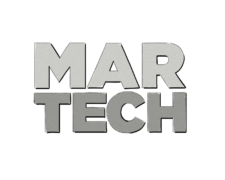Another year has come and gone and the 2016 edition of Scott Brinker’s now famous MarTech infographic is bigger than ever.
Would we expect anything different?
Each passing year brings a host of new players to the field with solutions powered by new innovations
This year is no exception.
In this third part of our series on the MarTech ecosystem, we delve into some of these innovations driving growth and opening up new marketing frontiers.
Innovation for pressing needs
Marketing, arguably more than any other business sector, has thrived on technical innovations since the dawn of the internet age, leading to the feverish expansion of the ecosystem that we have today.
Why is that?
One of MarTech’s most active venture capitalists, Neeraj Agrawal of Battery Ventures (whose portfolio includes Marketo, Optimizely, Tealium and Bazaarvoice to name a few) has an answer.
“[…] in digital marketing, we believe marketers will pick the best product, even if developed by an emerging start-up. Why? If a product can improve conversion rates on a website by even a few percentage points, that represents a huge improvement.”
This means that innovations, even in the minutest detail, have a chance to catch on – often in a big way!
One of the most noticeable differences in this year’s MarTech infographic is the large section devoted to data – a nod to its vital role in the entire ecosystem.
The main challenge being addressed by some of the latest innovations in data management for marketers is how to use data across their various platforms. Given that the average company uses around 40 or so cloud-based marketing apps, effective data usage is a major issue for marketers across the board.
Another is maximizing the potential of mobile marketing.
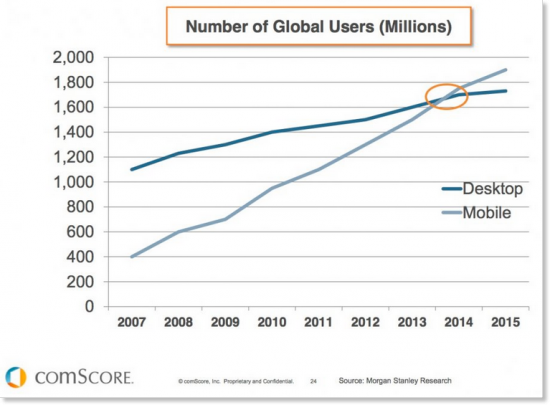
The last four years have seen mobile internet use overtake desktop and there is no sign that things will change. Connecting with consumers on the go has never been of more importance than now.
For more mobile marketing stats, check out The Marketing Helpline’s blog post that includes over 160+ stats.
Predictive marketing with machine intelligence
The value of data to digital marketers is nothing new. And the growth of vendors offering data management platforms (DMP) proves that enterprises are getting serious about harnessing it.
The desire for making that data more actionable is driving innovation and expansion in the area of machine learning algorithms to build on data layer technology so customer data is not only gathered and integrated but activated, making it possible to better engage with customers in real-time and determine best next-actions.
But processing and reacting to this data manually is a very time-consuming task for marketers. Imagine trying to select the most relevant blog posts and distribute them via a email newsletter to an audience of over 500 potential customers.
Talk about blood, sweat and tears!
Machine learning and advanced algorithms (coupled with cloud-based automation apps) come to the rescue.
AgilOne is one example of a vendor that has added predictive models based on complex algorithms to its repertoire.
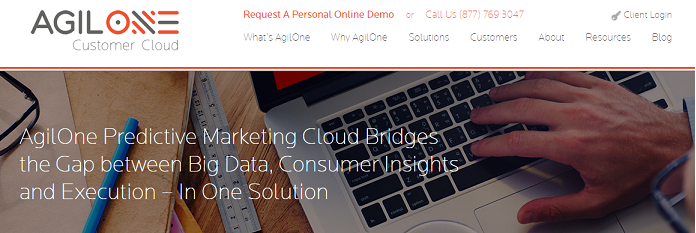
This allows for:
1. Behaviour clustering: Segmenting audiences according to their actions, number of purchases, frequency of visits, use of promotion codes etc. can help craft more personalized campaigns, target customers with items in their price range and keep them engaged.
2. Predicted lifetime value: It might seem like cheating, but having a clear picture of how much a customer may be worth to you is just plain smart. Again, algorithms that use a range of data such as geolocation, sex, social media activity can help marketers target “big fish” while wasting less time and effort engaging with low-value customers.
3. Recommendations: Timing is everything and knowing the right moment to pitch an up-sale, a cross-sale or any at all for that matter is important. Predictive modelling gives marketers the agility to be in the right place, at the right time with the right product or service.
Further evidence of predictive marketing innovation going mainstream comes from Salesforce’s announcement late last year that it is developing predictive machine intelligence for its marketing cloud.
And of course, the discussion wouldn’t be complete without mentioning Google, whose Prediction API offers customer sentiment analysis and message routing decisions among other things.
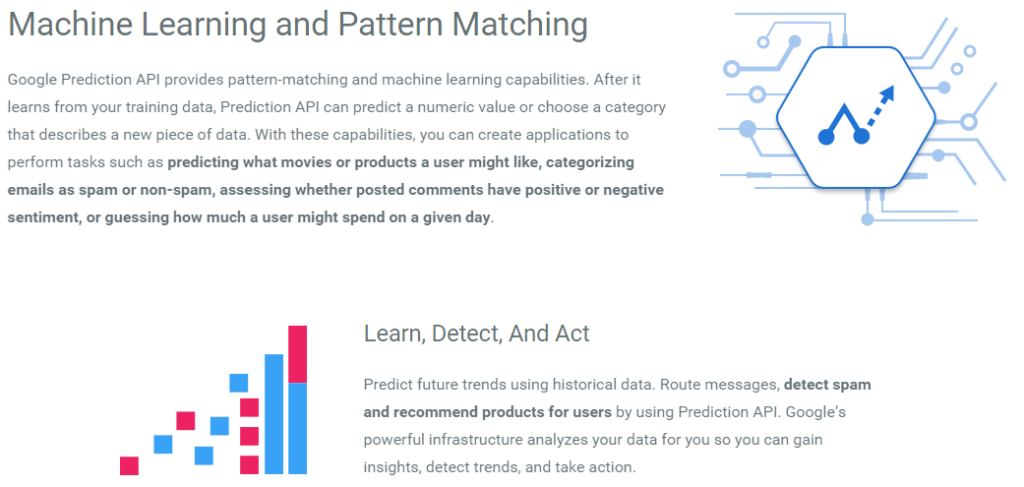
Perhaps even more interesting is the way some applications, notably Sailthru, Lytics as well as AgilOne, not only assign predictive scores to segmented audiences but also help marketers serve highly targeted content for those audiences.
This kind of automated efficiency has great potential to increase ROI and drive revenue.
Location, location, location
Place has always played a crucial role in the success of marketing campaigns. In fact it is one of the famous four P’s of marketing – along with product, price and promotion.
Now that it’s clear that mobile has taken over as the dominant space for internet browsing, connecting brands and potential customers in real-time based on location is becoming even more important.
As is often the case, Google is at the head of the pack with innovative technology that makes use of WiFi and GPS signals as well as POS checkout users to approximate the number of online transactions that people make after visiting a store.
“Connecting the dots” so to speak, in order to pinpoint users on their mobile devices at a critical moment, is a powerful element in the effort to –reach audiences at precisely the right time addressing their needs and wants and making them more likely to convert.
But Google isn’t alone, of course.
Swirl Networks was recently singled out as having one of the most innovative products in the Best of Biz awards with its beacon marketing platform.
Beacons – which allow brick-and-mortar retailers to connect with customers while they shop using WiFi or Bluetooth signals – are gaining more and more popularity. Far beyond just serving as a way to offer mobile checkout, but they can be a powerful marketing tool.
Serving promotions in real-time, offering rewards for customers who visit a dressing room and most importantly getting more insights about customer behaviour and sentiment are all great ways to leverage beacon technology.
Swirl’s platform also incorporates a programmatic ad exchange along with a third-party app network, so that retailers can partner with other brands who may want to capture a valuable “micro-moment” as a customer passes through a store.
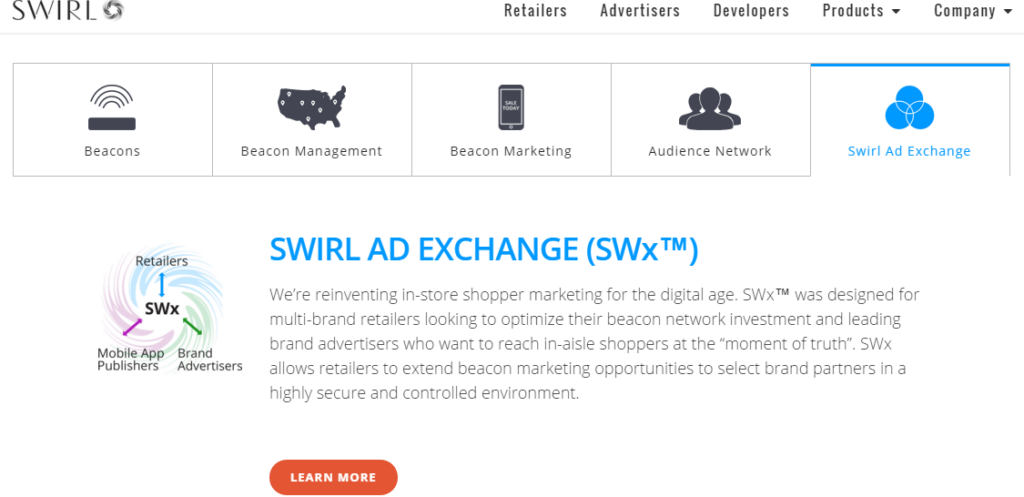
Always innovating
As Neeraj Agrawal aptly pointed out, marketers are always looking to get an edge. And this means that the stream of innovation in MarTech isn’t likely to dry up any time soon.
With the great potential for cloud-based marketing automation platforms (mentioned in the second part of this series), making the latest technology available to a wide range of users is easier than ever.
So it looks like Scott Brinker won’t have to stop making infographics any time soon!

